I think I got an email report of oil damaged birds that are not the typical sludge covered birds we've seen in the media. I think every birder along the Gulf Coast needs to pay special attention to feathers on the tails and wings of wetland birds. All of the photos in this entry are by my buddy, Carrol Henderson. Carrol took some photos in Mobile, Alabama, last week (July 21 and 22, 2010) while attending the nongame technical section meeting of the Mississippi Flyway Council. Carrol is always taking photos and he got some interesting shots of laughing gulls.
Here is a photo of a laughing gull in typical, adult plumage:
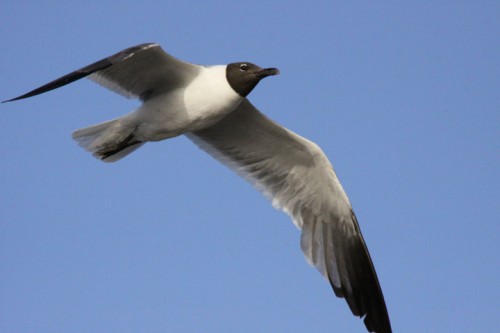
Note the above bird's tail feathers and wing feathers--they look strong and healthy. Now, take a look at this photo of a laughing gull:
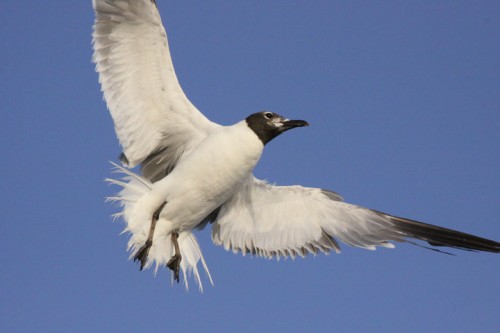
Carrol reported, "As I looked over the photos from the trip, I noticed that there were some gulls with very degraded tail feathers and secondaries. The veins of the feathers were missing along the tips." Not the pointy shafts on this bird? It has a little bit of white feathers around the bill--which is normal but those pointy feathers are not. How did that happen? And this wasn't the only gull with this feather pattern.
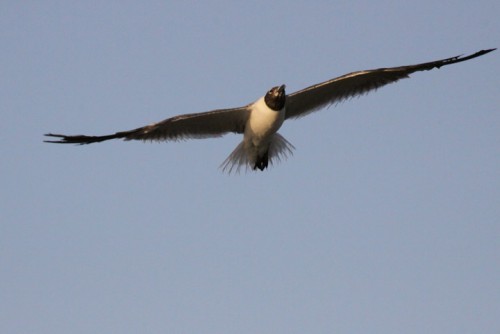
Carrol mentioned, "I have photographed many species of gulls in many countries in the past 20-plus years, but I have never observed this pattern of plumage degradation before. It does not appear related to the molt patterns of gulls, because they typically lose matching feathers from both wings in synchrony."
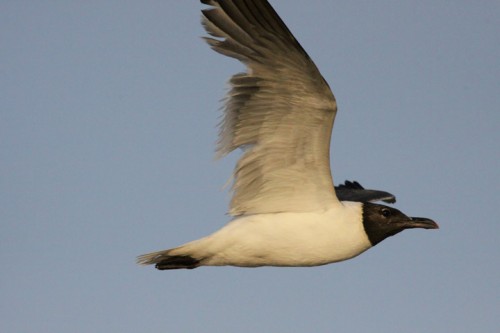
Carrol wonders if this could be the result of the veins breaking off of the feather shafts because of excessive preening after the feathers have been exposed to oil residue? Is it the oil itself? Is this the result of some of oil dispersant chemicals being used that the birds came into contact with while swimming on the water? Mobile is not far from the Gulf. Are there more birds out there with this sort of damage? This is not good news and this is subtle enough that these birds may get lost and unreported because you don't see oil on them directly.

Carrol said this bird sported a “suspicious” brown residue on the bill--oil residue? Oil is bad enough, but this feather damage can be just as devastating to a bird that only molts once a year. And if it's affecting local gulls, what will happen when birds from all over North America migrate south and land in the marshes?
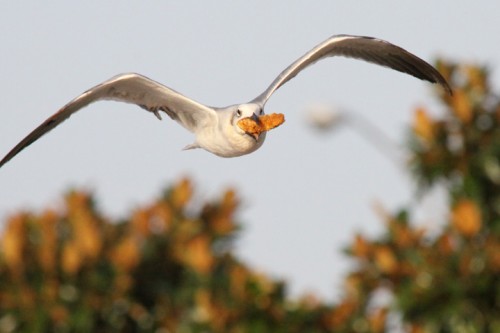
A local laughing gull relying on scavenging trash and taking chicken finger handouts from humans might be able to survive this feather damage. But what about a migrating sora? Or a migrating common yellowthroat? A migrating green heron? How can a bird go the long distance with such dramatic feather damage to the tail and wings?
